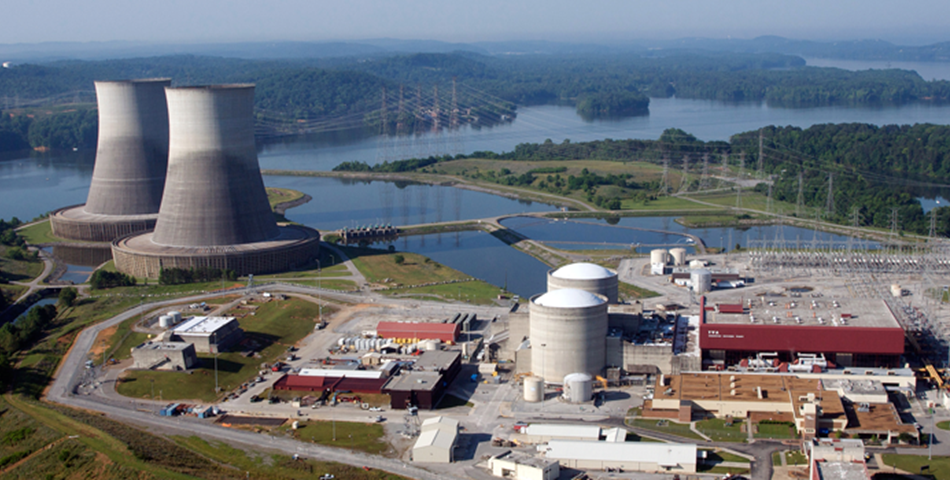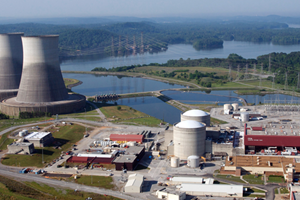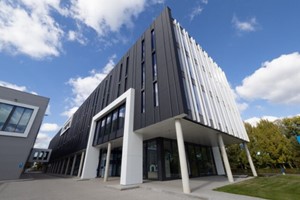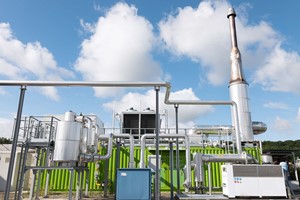The Light Water Reactor Sustainability (LWRS) program conducts research to develop technologies and other solutions to improve the economics and reliability, sustain the safety, and extend the operation of our nation’s fleet of nuclear power plants. It has two objectives with respect to long-term operations: (1) to provide science- and technology-based solutions to industry to overcome the current labor-intensive business model and associated practices; and (2) to manage the aging of systems, structures, and components (SSCs) so nuclear power plants can continue to operate safely and cost-effectively.
The Light Water Reactor Sustainability (LWRS) program is focused on the following three goals:
- Developing the fundamental scientific basis to understand, predict, and measure changes in materials and SSCs as they age in environments associated with continued long-term operations of existing nuclear power plants.
- Applying this fundamental knowledge to develop and demonstrate methods and technologies that support the safe and economical long-term operation of existing nuclear power plants.
- Researching new technologies to address enhanced nuclear power plant performance, economics, and safety.
Nuclear power has reliably and economically contributed approximately 20 percent of electrical generation in the United States over the past two decades. It remains the single largest contributor (approximately 56%) of non-greenhouse-gas-emitting electric power generation in the United States. Operation of the existing fleet of plants to 60 years, extending the operating lifetimes of those plants beyond 60 years and, where practical, making further improvements in their productivity are essential to support the nation’s energy needs: supply, reliability, and diversity.
In 2018, domestic nuclear utilities began submitting or announcing plans to submit applications to the NRC to begin the subsequent license renewal process extending the operating license period beyond 60 years from the date of their initial licensing. In fact, on December 5, 2019, NRC staff approved Florida Power & Light’s application to renew its licenses for its Turkey Point Nuclear Units 3 and 4, allowing the utility to operate the units until 2052 and 2053, respectively. This is the first time the NRC has issued renewed licenses authorizing reactor operation from 60 to 80 years. This marks an important planned milestone in the history of commercial nuclear power operations in the U.S.—one that underscores the long-term dependability of these plant designs and the commitment to their long-term performance by the organizations that operate them.
To continue to address the key issues of the domestic fleet, the LWRS program consists of the following primary technical areas of research and development (R&D):
- Plant Modernization: R&D to address nuclear-plant economic viability in current and future energy markets through innovation, efficiency gains, and business-model transformation through digital technologies. This includes addressing long-term aging and modernization or replacement of legacy instrumentation and control (I&C) technologies by research, development, and testing of new I&C technologies and advanced condition-monitoring technologies for more automated and reliable plant operation. The resulting R&D products will enable modernization of plant systems and processes while building a technology-centered business-model platform that supports improved performance at lower cost.
- Flexible Plant Operation and Generation: R&D to evaluate economic opportunities, technical methods, and licensing needs for light water reactors to directly supply energy to industrial processes. This pathway adapts and uses analysis tools developed by DOE to complete technical and economic assessments of large, realistic market opportunities for producing nonelectrical energy products in close proximity to nuclear power plants. Engineering development and design, testing, and demonstration of the integration systems of nuclear power plants with the industrial process are carried out. Pertinent safety assessments and licensing approaches are addressed to help support LWR owners with the integration of the new processes.
- Risk-Informed Systems Analysis: R&D to optimize safety margins and minimize uncertainties to achieve high levels of safety and economic efficiencies. The pathway will: (1) deploy risk-informed tools and methods of technologies that enable better representation of safety margins and the factors that contribute to cost and risk and (2) conduct advanced risk-assessment applications with industry to support margin-management strategies that enable more cost-effective plant operation. The tools and methods provided by the pathway will support effective safety-margin management for both active and passive SSCs of nuclear power plants.
- Materials Research: R&D to develop the scientific basis for understanding long-term environmental degradation and predicting the performance of materials in nuclear power plants. This work will provide data and methods to assess the performance of SSCs essential to safe and sustained nuclear power plant operations. R&D products will be used to inform operational limits and aging mitigation approaches for materials in nuclear power plant SSCs subject to long-term operating conditions, providing key input to both regulators and industry. The intent is to help reduce operating costs, which may be accomplished by offsetting maintenance costs using better predictive models for component lifetime, improved analysis of materials through nondestructive evaluation, reduced costs for repairs, or extended performance of plants through the selection of improved replacement materials.
- Physical Security: R&D to develop and enhance methods, tools, and technologies that advance the technical basis necessary to optimize and modernize a nuclear facility’s security posture. The pathway will: (1) conduct R&D on aspects of risk-informed techniques for physical security to account for a dynamic adversary; (2) apply advanced modeling and simulation tools to better inform physical-security scenarios and reduce uncertainties in various force-on-force modeling results; (3) assess benefits from proposed enhancements and novel mitigation strategies and explore changes to best practices, guides, or regulation to enable modernization; and (4) enhance and provide the technical basis for stakeholders to employ new security methods, tools, and technologies to achieve physical security.













